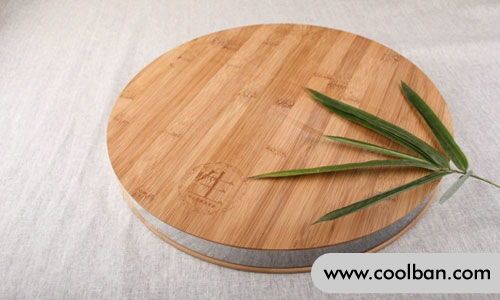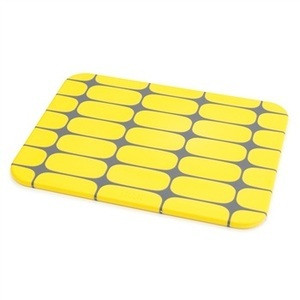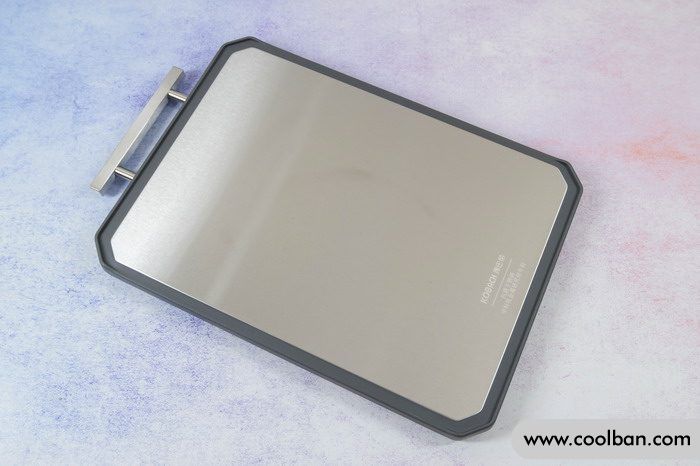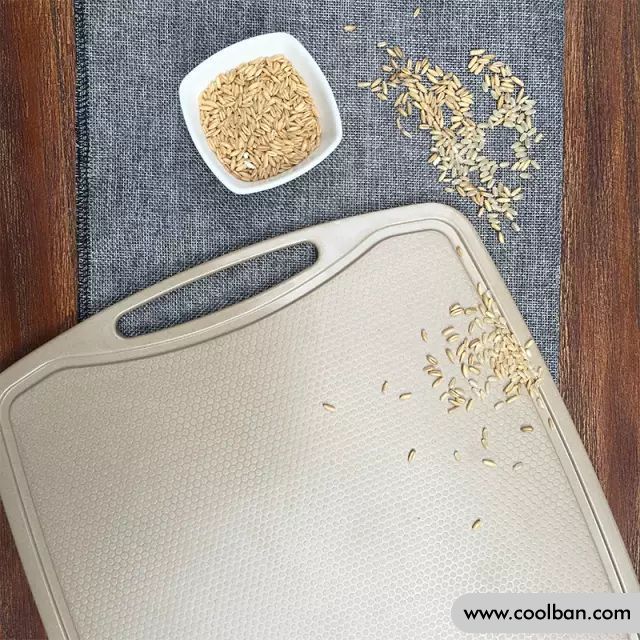How to keep the cutting board hygienic?
2022-06-22
At home, three meals a day are inseparable from cutting boards. Different materials have their own advantages and disadvantages. We might as well choose carefully to find the most suitable cutting board for your cooking needs. Below I will give you a guide to choosing a cutting board and tips for maintaining hygiene
Tips for maintaining hygiene with wood
Hygiene Tips Advantages Economical and durable. The wooden cutting board has high density and toughness, is strong and heavy, and is very firm to use. It is suitable for chopping ribs and chopping stuffing. Cutting boards made of jujube, ginkgo, elm, saponin, birch or willow are better.
Hygiene Tips Disadvantages Easy to breed bacteria. Wooden cutting boards are generally difficult to clean because they are prone to knife marks and depressions, which are easy to breed bacteria. The wooden cutting board has strong water absorption and is not easy to be air-dried for a long time in a humid environment, which is easy to mold.

Plastic Tips for maintaining hygiene
The advantages of hygiene tips can be easily distinguished by changing frequently. Most of the plastic is made of PE material. If you buy it well, it is indeed environmentally friendly and not easy to mold. Plastic cutting boards are cheap and easy to clean. Different colors can be used to distinguish the different uses of the cutting board, such as red for cutting raw meat, green for cutting vegetables, and yellow for cutting cooked food and fruit. Doing so is more hygienic to avoid cross-contamination.
Disadvantages of hygiene tips are fragile and easily deformed. Sauce elbows just out of the pot are not suitable for cutting with plastic cutting boards. The plastic cutting board is fragile and cannot withstand vigorous cutting. Some plastic cutting boards with rough texture are easy to cut out dregs, which can enter the human body with food and cause damage to the liver and kidneys. Pay attention and touch them when purchasing. Some dark-colored plastic cutting boards may have more harmful substances. It is best to choose plastic cutting boards with translucent color, good quality, uniform color, no impurities and pungent odor.

Bamboo Tips for maintaining hygiene
Advantages Environmental protection is not easy to mold. Bamboo fiber is not easy to fall off the surface, and it is not easy to leave knife marks on the surface, which reduces the risk of hiding food residues. Bamboo has poor water absorption and is not easy to mildew. It is an exaggeration for some businesses to promote the antibacterial effect of bamboo cutting boards.
Weak strength. Bamboo cutting boards cannot be used to chop meat. Bamboo cutting board is made by splicing strips of bamboo. The thickness and density are relatively low, and it is easy to break when it is chopped by gravity.
Hygiene tips for metal cutting boards
Advantages Easy to clean. The metal is mostly made of 304 stainless steel, which is strong and easy to use, not easy to breed bacteria and easy to clean.
Disadvantage It is not suitable to use metal knives. A good companion to stainless steel is a ceramic knife that works best for slicing meat. Chopping meat vigorously with a metal knife can create knife marks on the surface of the cutting board.

Plant fiber Tips for maintaining hygiene with wood
The advantage is that it is not easy to crack and crumbs will not leave knife marks, and there will be no food residues on the cutting board. Due to the use of wheat straw, straw, rice bran and other materials to grind into powder, add binder and then press to form under high pressure, the material is dense and easy to dry and not easy to breed bacteria.
Disadvantages Adhesives are risky. Wheat straw, straw, rice bran, etc. are all biodegradable materials, which are very environmentally friendly, but some unscrupulous businesses will use poor quality adhesives. When purchasing this class, pay attention to the composition of its adhesive.

Tips for keeping the cutting board hygienic
Hygiene Tips 1. Separate raw and cooked products as much as possible to avoid cross-contamination.
Regardless of the material of the cutting board, after cutting raw meat, poultry and seafood, if you want to cut other food, you must choose another one and use it separately. This is done to avoid cross-contamination of other foods by bacteria that remain on one, especially the cutting board that has been cut raw meat and then used to cut cooked food, which can easily cause foodborne illness. So it is best to prepare two cutting boards.
Hygiene tips 2. Keep it clean.
After use, use a hard board brush and clean water to wash off the dirt together with the sawdust. If fish, meat and other fishy smells are left, it can be washed with rice water or washing spirit dissolved with salt and then washed with warm water. Do not scald with boiling water because the protein in the meat remains on the cutting board and solidifies when heated, and it is difficult to wash. After washing, let it dry in a ventilated place. Do not place it close to the wall or flat, otherwise the other side will not be able to dry and it will easily breed mold. But do not easily expose the wet cutting board to the sun to prevent its deformation and affect the use.
Hygiene tips 3. Reasonable use.
When using the cutting board, one end of the cutting board should not be used for rotation. It should be used to keep the cutting board wear and tear evenly to avoid unevenness on the commonly used side.
Hygiene tips 4. Timely replacement.
Whether you use a plastic cutting board or a wooden cutting board, it will age over time. Once the surface starts to become matted and grooved, it can be difficult to clean thoroughly. Especially when cutting meat, fish, cooked food and vegetables on the cutting board every day, it is inevitable that some food will remain in the grooves on the surface of the cutting board, so as to provide an environment for the growth of germs. At this time, a new cutting board should be replaced in time. .
Tips for maintaining hygiene with wood
Hygiene Tips Advantages Economical and durable. The wooden cutting board has high density and toughness, is strong and heavy, and is very firm to use. It is suitable for chopping ribs and chopping stuffing. Cutting boards made of jujube, ginkgo, elm, saponin, birch or willow are better.
Hygiene Tips Disadvantages Easy to breed bacteria. Wooden cutting boards are generally difficult to clean because they are prone to knife marks and depressions, which are easy to breed bacteria. The wooden cutting board has strong water absorption and is not easy to be air-dried for a long time in a humid environment, which is easy to mold.

Plastic Tips for maintaining hygiene
The advantages of hygiene tips can be easily distinguished by changing frequently. Most of the plastic is made of PE material. If you buy it well, it is indeed environmentally friendly and not easy to mold. Plastic cutting boards are cheap and easy to clean. Different colors can be used to distinguish the different uses of the cutting board, such as red for cutting raw meat, green for cutting vegetables, and yellow for cutting cooked food and fruit. Doing so is more hygienic to avoid cross-contamination.
Disadvantages of hygiene tips are fragile and easily deformed. Sauce elbows just out of the pot are not suitable for cutting with plastic cutting boards. The plastic cutting board is fragile and cannot withstand vigorous cutting. Some plastic cutting boards with rough texture are easy to cut out dregs, which can enter the human body with food and cause damage to the liver and kidneys. Pay attention and touch them when purchasing. Some dark-colored plastic cutting boards may have more harmful substances. It is best to choose plastic cutting boards with translucent color, good quality, uniform color, no impurities and pungent odor.

Bamboo Tips for maintaining hygiene
Advantages Environmental protection is not easy to mold. Bamboo fiber is not easy to fall off the surface, and it is not easy to leave knife marks on the surface, which reduces the risk of hiding food residues. Bamboo has poor water absorption and is not easy to mildew. It is an exaggeration for some businesses to promote the antibacterial effect of bamboo cutting boards.
Weak strength. Bamboo cutting boards cannot be used to chop meat. Bamboo cutting board is made by splicing strips of bamboo. The thickness and density are relatively low, and it is easy to break when it is chopped by gravity.
Hygiene tips for metal cutting boards
Advantages Easy to clean. The metal is mostly made of 304 stainless steel, which is strong and easy to use, not easy to breed bacteria and easy to clean.
Disadvantage It is not suitable to use metal knives. A good companion to stainless steel is a ceramic knife that works best for slicing meat. Chopping meat vigorously with a metal knife can create knife marks on the surface of the cutting board.

Plant fiber Tips for maintaining hygiene with wood
The advantage is that it is not easy to crack and crumbs will not leave knife marks, and there will be no food residues on the cutting board. Due to the use of wheat straw, straw, rice bran and other materials to grind into powder, add binder and then press to form under high pressure, the material is dense and easy to dry and not easy to breed bacteria.
Disadvantages Adhesives are risky. Wheat straw, straw, rice bran, etc. are all biodegradable materials, which are very environmentally friendly, but some unscrupulous businesses will use poor quality adhesives. When purchasing this class, pay attention to the composition of its adhesive.

Tips for keeping the cutting board hygienic
Hygiene Tips 1. Separate raw and cooked products as much as possible to avoid cross-contamination.
Regardless of the material of the cutting board, after cutting raw meat, poultry and seafood, if you want to cut other food, you must choose another one and use it separately. This is done to avoid cross-contamination of other foods by bacteria that remain on one, especially the cutting board that has been cut raw meat and then used to cut cooked food, which can easily cause foodborne illness. So it is best to prepare two cutting boards.
Hygiene tips 2. Keep it clean.
After use, use a hard board brush and clean water to wash off the dirt together with the sawdust. If fish, meat and other fishy smells are left, it can be washed with rice water or washing spirit dissolved with salt and then washed with warm water. Do not scald with boiling water because the protein in the meat remains on the cutting board and solidifies when heated, and it is difficult to wash. After washing, let it dry in a ventilated place. Do not place it close to the wall or flat, otherwise the other side will not be able to dry and it will easily breed mold. But do not easily expose the wet cutting board to the sun to prevent its deformation and affect the use.
Hygiene tips 3. Reasonable use.
When using the cutting board, one end of the cutting board should not be used for rotation. It should be used to keep the cutting board wear and tear evenly to avoid unevenness on the commonly used side.
Hygiene tips 4. Timely replacement.
Whether you use a plastic cutting board or a wooden cutting board, it will age over time. Once the surface starts to become matted and grooved, it can be difficult to clean thoroughly. Especially when cutting meat, fish, cooked food and vegetables on the cutting board every day, it is inevitable that some food will remain in the grooves on the surface of the cutting board, so as to provide an environment for the growth of germs. At this time, a new cutting board should be replaced in time. .
